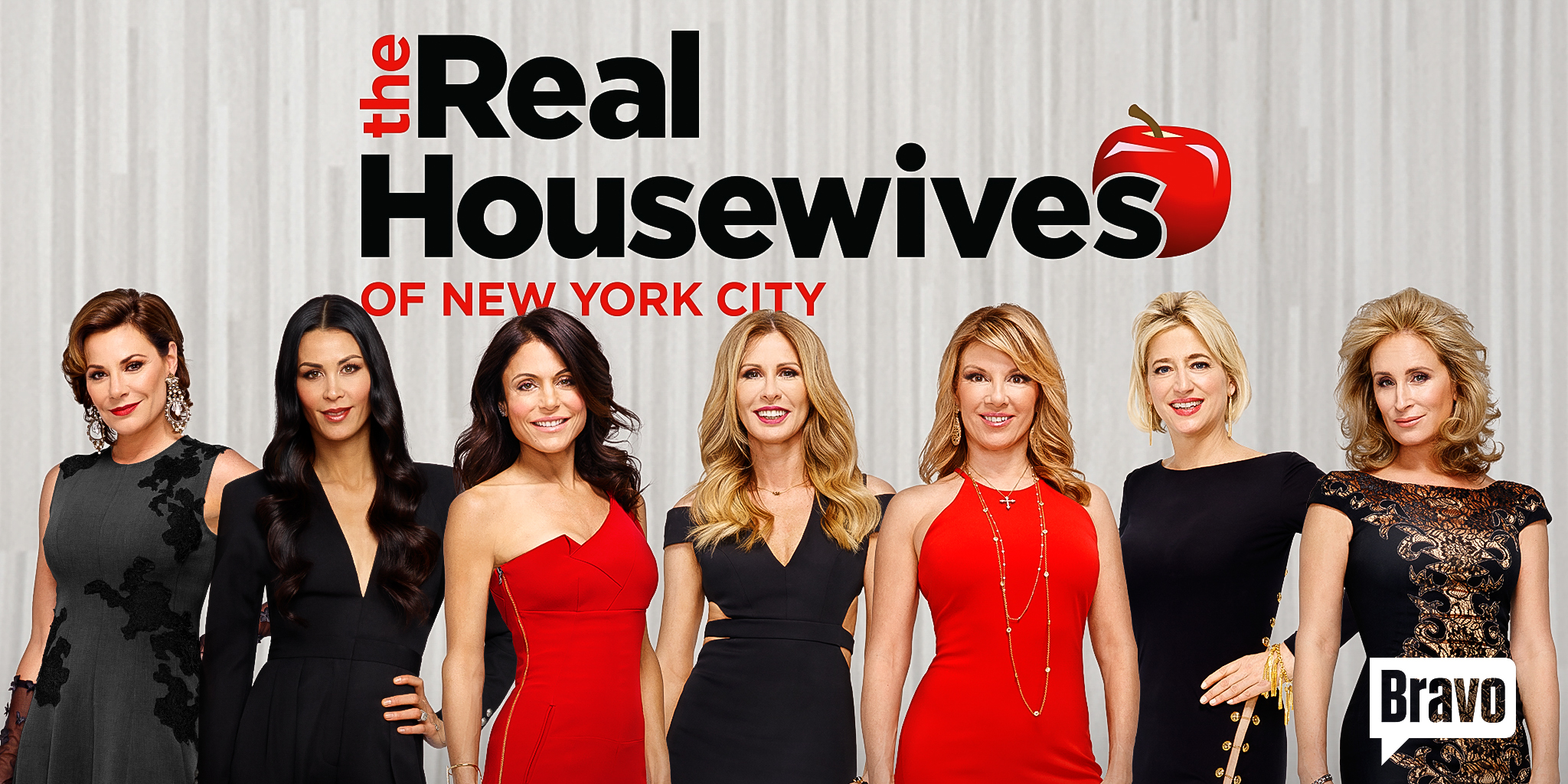
c/o blog.roku.com
In early June, I was walking on the Upper East Side of Manhattan when something—or rather someone—caught my eye. I stopped in my tracks. I was standing on the concrete partition between the east and west sides of Park Avenue in Manhattan, and maybe three inches from me was Sonja Morgan of “The Real Housewives of New York City.” I nearly peed with excitement.
Upon closer inspection, I found that it was not just Sonja Morgan, either. It was Sonja Morgan and a denim-on-demin-clad assistant, with flowing blonde hair and chunky white sneakers. They, Sonja and her assistant, were both impossibly chic, she in her big black sunglasses and he in his tight jeans, denim jacket, and gender-neutral shoes. I wondered what had brought them to this concrete partition in the middle of Park Avenue on this weekday morning. Were they headed to lunch? To shop? To the groomer’s to pick up Harllee, Morgan’s miniature apricot poodle?
Even though Sonja Morgan isn’t even my favorite real housewife (that distinction belongs to Carole Radziwill, the writer-princess whose voiceover introduction at the beginning of each episode goes something like, “If you’re going to talk about me behind my back, at least check out my great ass”), I entertained the thought of following her across the street once the light changed. Instead, I went the less creepy route and took a few covert pictures of her back, leaned on my companion to keep from fainting, and debated for the entire duration of our stay at the traffic light whether or not to ask for her autograph. I’m a notorious fan girl who flies into a tizzy at the sight of any celebrity, but now that a real housewife had entered the equation, I couldn’t handle myself.
As far as reality TV goes, the “The Real Housewives” are at the bottom of the hierarchy, somewhere between “Duck Dynasty” and “Kate Plus Eight.” Even my mother, who watches every awful TV show known to man, including “The Bachelor,” balks at the thought of watching “Housewives.”
Yes, “The Real Housewives” is a trashy TV show, if by “trash” you’re referring to the literal gold mine of discarded treasure and completely edible food scraps that most people dismiss as disgusting or useless.
So what’s so great about “The Real Housewives”?
First of all, let me be clear: I’m speaking only about “The Real Housewives of New York City,” which is the only “Housewives” show that I watch and, to be quite frank, probably the only one worth watching. The others—“The Real Housewives of New Jersey,” “The Real Housewives of Miami,” “The Real Housewives of Atlanta,” etc.—might have something going for them, but to be honest, I don’t care enough to find out. I’ll stick with New York.
I love “The Real Housewives” not because I love watching 50-year-old women embarrass themselves on television (although let’s be clear: I very much do), but because despite its “reality” categorization, the show and its characters are so ridiculous that they’re larger than life. On the one hand, you see, the entire point of the show is that these are real women: They roam the streets of New York (many of my high school friends were even friends with one of the women’s daughters, and they were all filmed attending the daughters’ Sweet 16 party). But the knowledge that these women are real—that the characters on the show actually exist, despite the extent to which they might be exaggerated for TV viewers—isn’t what attracts me to the show. Instead, I watch the show because these women’s “realities” are so outrageous and ostentatious that their plotlines function as escapes. In its absurd grandiosity and extravagance, the show keeps the world at bay for me, buffering me for 41 blissful minutes from the harshness of my own reality.
It’s the excess of it all, the drama of a single cocktail party, that comforts me. Watching these women work themselves up over a brunch invitation soothes my every frazzled nerve; it’s unbelievably calming to watch them worry about unreal things. Obsessing over parties and exercise routines, they not only make me feel slightly serious and intellectual, but they also remind me of the slight ridiculousness of my own worries: doing schoolwork, finding a job, navigating my social life. Isn’t it all kind of dumb? Watching the show is humbling. We’re all ridiculous people working ourselves up over what’s usually completely insignificant.
Besides, the women are not all shallow and materialistic. Sure, they have a lot of stuff, but that doesn’t mean they’re not complicated, and the show does an average job of showing these complexities: They fight with their husbands, struggle to balance their families and their careers, and even worry about money. They grieve, they laugh, and yes, they drink. (A lot.) They humiliate themselves; they fight; they make up. The show concerns itself with friendship (Jill Zarin and Bethenny Frankel’s friend break-up in season 3 brought tears to my eyes), with class and gender (watch it just for the sociological fascination), and with love.
Besides, the show is absolutely hilarious. Whether it’s Countess Luann de Lesseps singing and writhing to one of her auto-tuned singles, “Chic, C’est la Vie,” “Money Can’t Buy You Class,” or “Girl Code,” Sonja Morgan screeching, “What are you doing he-ah without Dorindaaaa?” at her co-star Dorinda Medley’s boyfriend, Ramona Singer misusing idioms, or Aviva Drescher hurling her prosthetic leg at her co-stars after they’ve accused her of faking asthma to avoid going on a trip with them, nobody—neither the women nor the viewers nor the producers—take themselves too seriously.
What more, really, can you ask for?